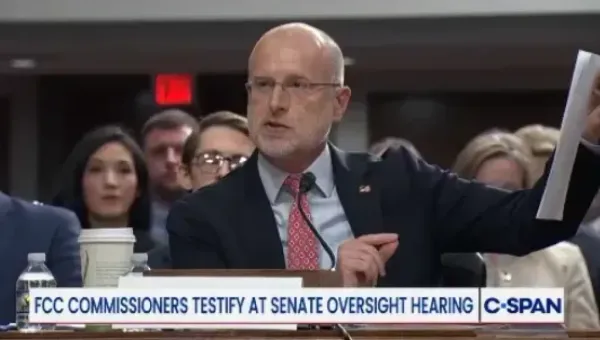Questions about Broadband Data Swirl at Broadband Policy Summit
June 12 – Questions about the availability and detail of broadband data featured prominently in presentations and in discussions at Thursday’s sessions of Broadband Policy Summit IV.
WASHINGTON, June 12 – Questions about the availability and detail of broadband data featured prominently in presentations and in discussions at Thursday’s sessions of the Broadband Policy Summit IV, which was sponsored by Pike & Fischer.
“I have been long lamented that we don’t have a national broadband policy,” said Jeff Campbell, senior director of technology and communications policy at Cisco Systems. “If we did have a national broadband plan, we would have to define what exactly is the problem that we are attempting to solve.”
For example, Campbell said during the summit’s first panel – on the regulatory outlook for broadband – more information was needed on the number of households that have Internet connections, the speeds at which they are available, and how many subscribers take up such services.
“We just don’t have the basic building blocks of the data to size the problem” and propose solutions to it, said Campbell. He applauded the work of the California Broadband Task Force, which produced address-level data about both broadband available and promised speeds. The California report did not list broadband data by carrier.
Larry Landis, a commission with the Indiana Utility Regulatory Commission on the same panel, agreed. “There is a heightened need for actionable data,” both about where broadband is and where it isn’t. He said that state regulatory officials aim to get more involved in assessing availability, speeds and broadband competition.
Joe Waz, senior vice president of external affairs for Comcast, addressed the cable company’s aggressive efforts to roll out DOCSIS 3.0, a higher-speed version of cable modem served that promises 50 megabits per second (Mbps) download speeds, and 5 Mbps upload speeds, “in front of 20 percent of our homes by the end of this year, and to just about all homes by the end of 2009.”
On the data collection front, Waz praised the work of Connected Nation, which is mapping out information about broadband availability in many states.
James Cicconi, senior executive vice president at AT&T, applauded the Federal Communications Commission’s March 19 data-collection order.
The second panel, on U.S. broadband deployment, also probed further into data-policy issues. Scott Wallsten, vice president for research and senior fellow at the Technology Policy Institute, critically dissected a recent study, by the Organization for Economic Cooperation and Development, showing the U.S. broadband penetration at 15th globally.
The OECD numbers skew U.S. performance because of the country’s relatively large household size, Wallsten said. Further, the OECD results implausibly exclude business use of broadband in its rankings. The bottom line, he said: “relax, we’re fine” on broadband availability and speeds.
Jonathan Banks, senior vice president of law and policy at the trade association US Telecom, said that the technology, media and telecom (TMT) industries had become a significant driver of the U.S. economy. “We see broadband connections being essential to the TMT ecosystem.”
Scott Deutschman, an adviser to FCC Commissioner Michael Copps (who gave an earlier keynote address), also noted the need for better data-gathering, and was cautiously optimistic about the FCC’s March 19 change. “We are headed down the road to colecting better data, that will allow to make better policy-making going forward,” said Deutschman.
Deutschman also called for the FCC to act as a clearinghouse, or a collector of general broadband strategies and ideas.
Mark McElroy, chief operating officer for Connected Nation, touted the importance of public-private partnership in assembling broadband data and creating “e-community leadership teams” to help promote awareness of broadband and encourage subscription.
Daniel Mitchell, vice president of legal affairs for National Telecommunications Cooperative Association, which represents small telecommunications cooperatives, said that Network Neutrality could grow in significance as a political issue if there is not greater competition among broadband providers.
Editor’s Note:
I was able to make a number of contributions to the Broadband Policy Summit. In addition to submitting a written paper about BroadbandCensus.com, I was able to ask a number of questions, and highlight the contribution that our free Web service is playing in the broadband data debate.
As I have said in other forums, knowing where broadband is and isn’t available is the first step toward making sure that broadband truly is accessible to all Americans, but it is only the first step.
Next, consumers and policy-makers must have access to information about broadband competition, speeds and prices. This is best done by publicly linking the data to broadband carriers.
Putting all of this information available, for free, in one readily accessable place is the goal of BroadbandCensus.com. By including the names of carriers, and by allowing consumers to rate their service quality, BroadbandCensus.com will enable Internet users to make true head-to-head comparisons. We believe that these types of comparisons are an essential part of understanding broadband, and of building a national broadband strategy for America.
-Drew Clark, Editor, BroadbandCensus.com









Member discussion